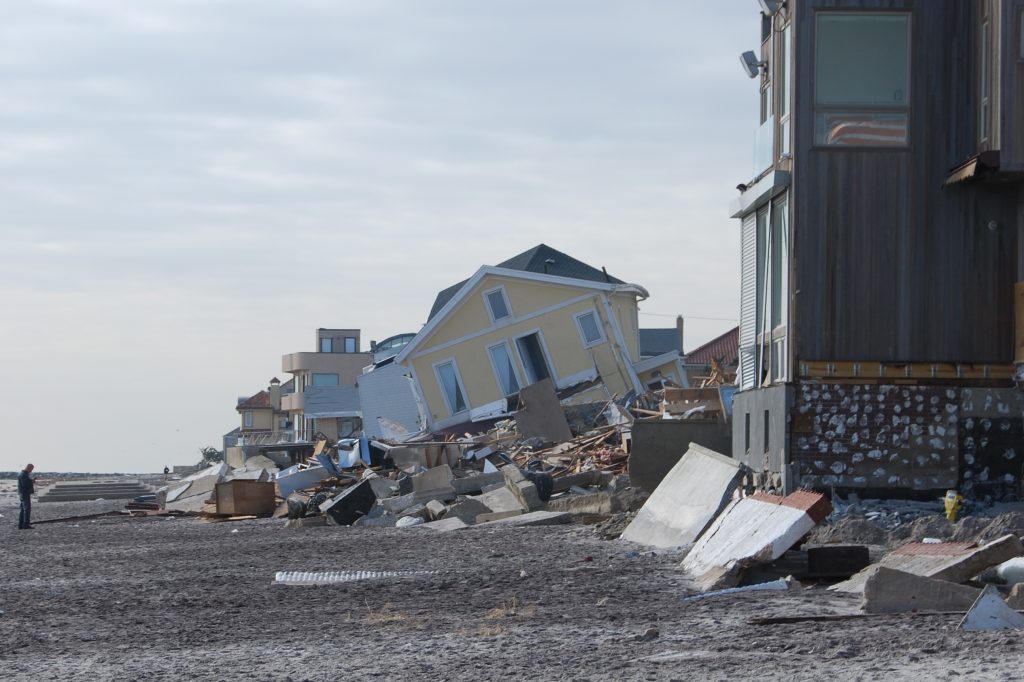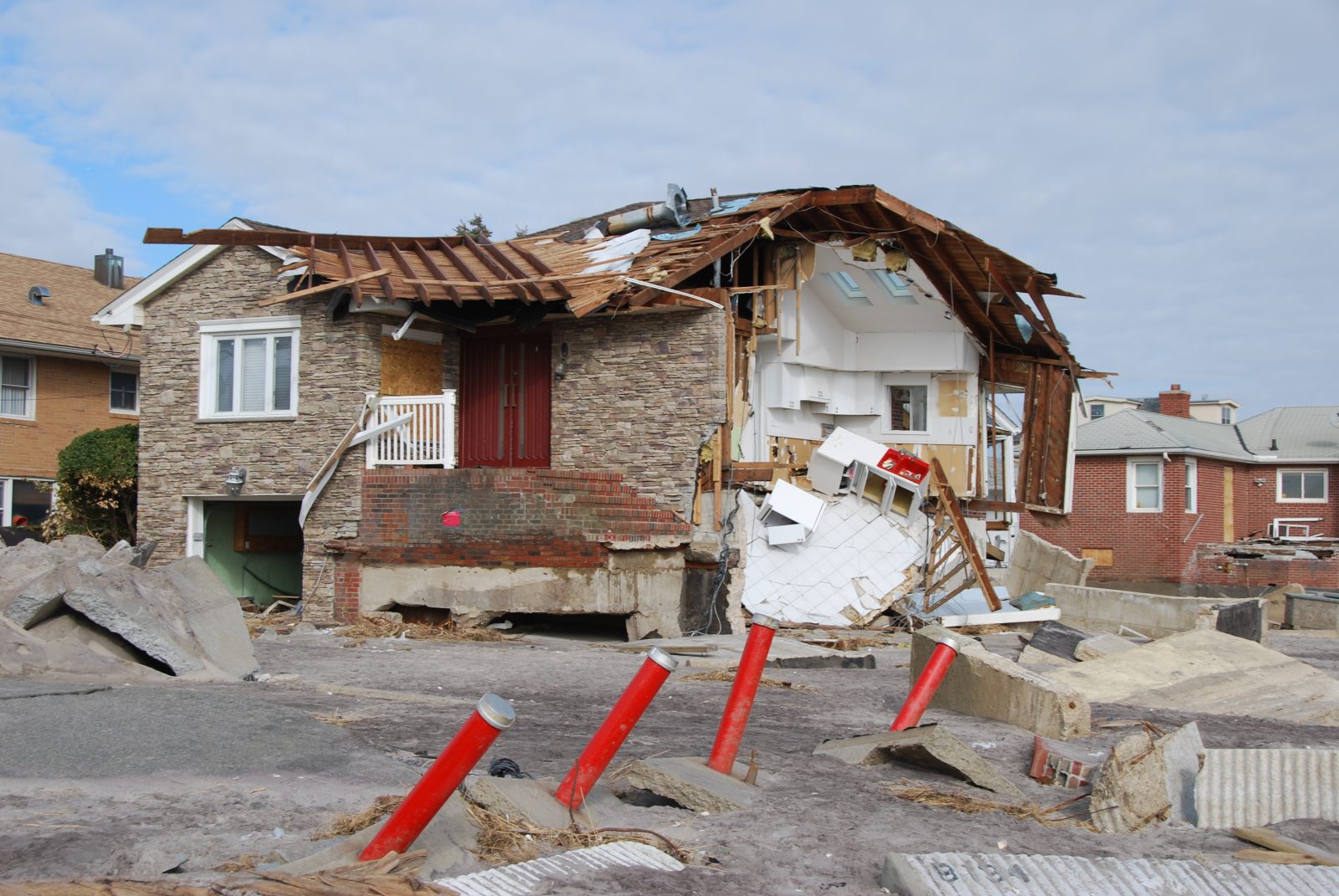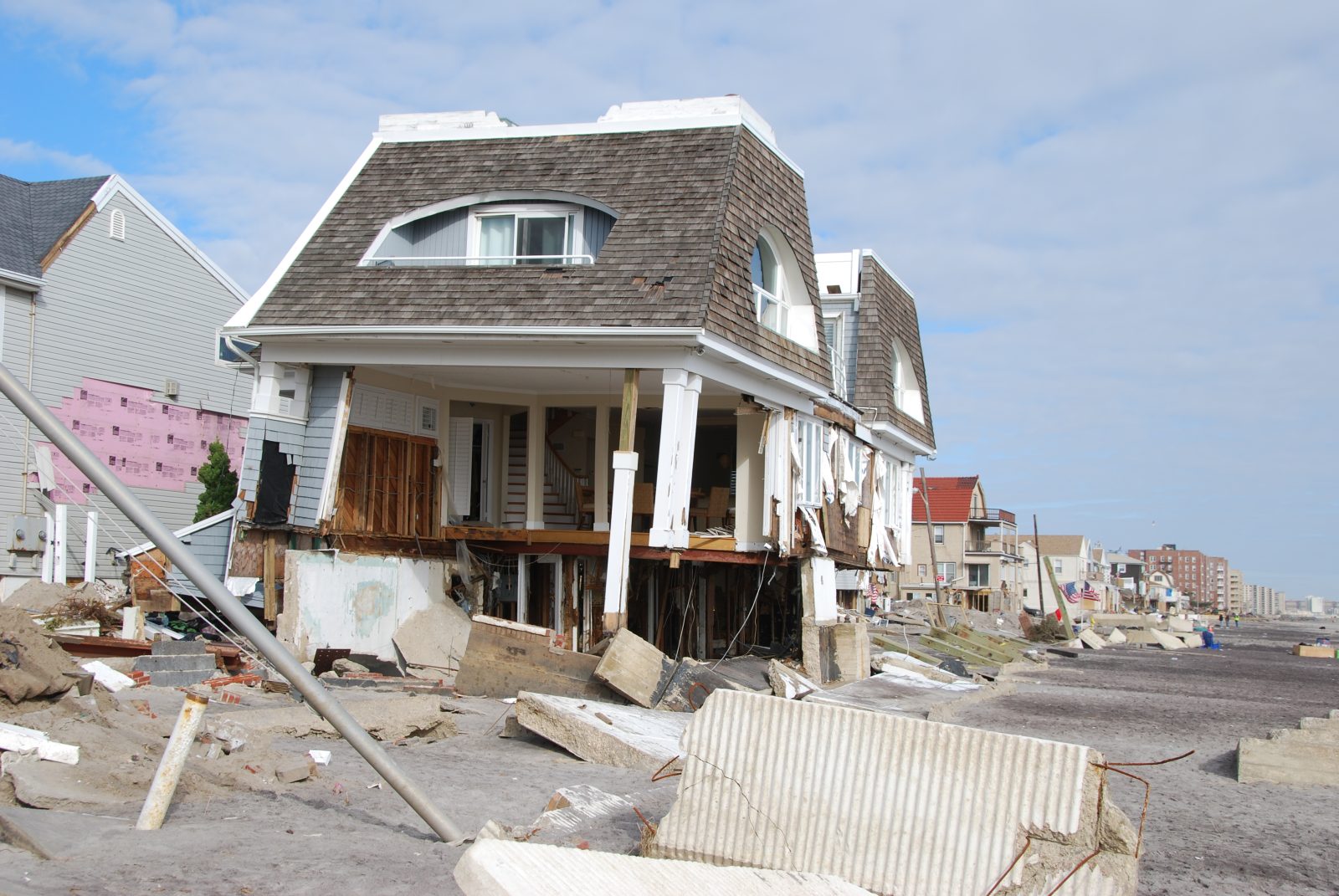Learning from the Storm

Hurricane Sandy exposed inherent vulnerabilities in our infrastructure and built environment, and highlighted the ineffectiveness of protection measures in place to deal with natural phenomena of such magnitude. Given our ever-changing climate and the potential for increased frequency of larger storms such as Sandy, it is in the best interest of the building industry to understand the consequences of such events and to implement measures to mitigate damage from future storm events. Simpson Gumpertz & Heger Inc. (SGH) worked on behalf of government agencies, insurance companies, and private owners in the wake of Sandy (and many other storms) to investigate structures with storm-related damage, to understand the mechanisms by which the damages occurred, and to develop mitigation options to address potential future risks.

Understanding the Environment
When evaluating a structure for potential damage risks due to a storm event such as Hurricane Sandy, one must first understand the inherent vulnerabilities of the site upon which the structure is built. Coastal communities may be exposed to coastal erosion and flooding hazards, such as tidal surge, battering wave-action, as well as high winds resulting from unobstructed airflow over open oceans. Structures built in elevated areas may be less susceptible to flooding hazards, but may be more susceptible to wind damage, such as fallen trees and wind-borne debris, torn-off roofing and siding, and even partial structural collapses. An awareness of the site location and its immediate surroundings is crucial to understanding damage vulnerability and the likely cause(s). SGH employs multidisciplinary expertise and decades of experience to evaluate risks associated with exposure and environmental conditions at any given site, and to develop remedial and mitigation approaches tailored to meet site-specific needs.
Understanding the Structure
To evaluate the potential damage risks, it is also necessary to understand the overall structural system, the load path within the structure, and the vulnerabilities of that structure and its components. Different materials and systems respond in different ways to environmental factors, external loading conditions, changes in temperature and relative humidity, and to building movements. The topography of a site may provide clues about surrounding soil properties and the possible foundation system supporting the structure. At SGH, we draw upon our vast experience in designing, investigating, and rehabilitating building structures to make informed assessments and recommendations for remedial or risk mitigation work.


Given our ever-changing climate and the potential for increased frequency of larger storms such as Sandy, it is in the best interest of the building industry to understand the consequences of such events and to implement measures to mitigate damage from future storm events.
Mitigating Future Risk
One year after the devastation and disruptions caused by Hurricane Sandy, many building owners are seeking to implement mitigation measures to protect their investments and to prevent business or living interruptions. In order to implement effective disaster mitigation measures, it is essential to understand what natural phenomena a building has experienced in the past, how the structure fared under those conditions (i.e., identify inherent vulnerabilities), and what are the projections for likely future events. The National Oceanic and Atmospheric Administration, U.S. Geological Survey (USGS), and other agencies publish data on historic weather events that provide sustained wind speeds and wind gust speeds, precipitation data, floodwater surface elevations, storm surge data, and other information to help design professionals understand the forces that structures have endured historically. As a result of past events, federal and private agencies (e.g., FEMA, NFIP, and others) are revising their flood risk assessment for certain communities in New Jersey and New York, and are publishing updated information to assist property owners and design professionals in understanding potential future risks. Such information includes updated FEMA Flood Insurance Rate Maps (FIRM) with revised base flood elevations and technical articles on methodologies aimed at reducing the effects of flooding and wind damage.
In addition, there are numerous mitigation techniques and systems that designers, owners, and property managers may evaluate for their appropriateness on a case-by-case basis. These options may include:
- Relocation of essential equipment within a structure
- Flood-resilient construction materials
- Floodproofing and waterproofing
- Wind and flood barrier systems, etc.
It is important to evaluate positives and negatives of various mitigation techniques and to research new hazard mitigation products that are being developed. Since each building is a unique case, designers can utilize mitigation techniques and products in many different combinations and are able to provide building owners and managers with guidance in selecting holistic mitigation options that best suit specific building needs and budgets. At SGH, we stay informed about the latest published government data and industry products in order to provide our clients with sound, well-informed, and cost-effective solutions that fit their needs.